 She rocks, this woman in the stone. It is difficult to believe that she is about a thousand years old. We don’t know much about her. She may represent a dancer, devadasi, apsara, maid or courtesan. She adorns the Adinatha temple in the eastern group of temples in Khajuraho, Madhya Pradesh. During the tenth and eleventh centuries, when Europe was a God-haunted place turned by the bubonic plague into a vast graveyard, the Chandela Rajputs embarked on a joyous architectural project of unequalled moral courage and aesthetic ambition. The woman in the stone was one of their minor discoveries.
She rocks, this woman in the stone. It is difficult to believe that she is about a thousand years old. We don’t know much about her. She may represent a dancer, devadasi, apsara, maid or courtesan. She adorns the Adinatha temple in the eastern group of temples in Khajuraho, Madhya Pradesh. During the tenth and eleventh centuries, when Europe was a God-haunted place turned by the bubonic plague into a vast graveyard, the Chandela Rajputs embarked on a joyous architectural project of unequalled moral courage and aesthetic ambition. The woman in the stone was one of their minor discoveries.
Unlike the other adornments in the temples, she is turned away from the viewer’s eye; the characteristic “glancing away” look used in Indian art (and by teenagers) to signal a pretended unawareness has been turned into an actual unawareness; the viewer becomes a voyeur, if only for that moment of turning away. The centuries are now like a lens through which we happen to see a very beautiful woman caught turning in mid-dance. Dancing is what she must be doing, for it is too stylized to be anything else.
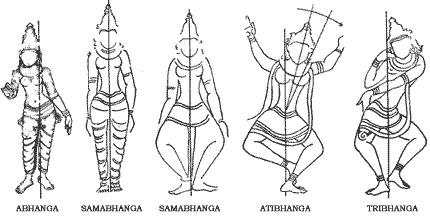
The pose in which her sculptor — some unknown genius — found her is called the tribhanga, which means, roughly, “equipoised stance bent in three places.” In the western aesthetic tradition, the tribhanga is known as the “contrapposto.” The tribhanga is one of the five bhangas (equipoised stances) in traditional IndianIt’s much more accurate to say “South-Asia” and “South-asian” rather than “India” and “Indian” but it’s also more clumsy, so I’ll stick with the less accurate tags.†. dance: the others are shown in the figure on the right. The abhanga and tribhanga poses were both very popular in ancient and medieval Indian art.
The woman in the stone is a lovely representation of an aesthetic ideal. There’re some interesting aspects to both the pose as well the ideal. It touches upon the Doryphoros of Polykleitos, the Golden ratio and the sutras of Acharya Hemachandra. Anna Nicole Smith makes an appearance, as she must, in any discussion of aesthetics. Did I mention Kalidasa’s thoughts on Parvati’s thighs? No? Well, let’s get on with it then.
In his Brihat Samhita, the scholar Varahamihira (505 – 587 C.E.) spelled out the feminine ideal in terms of a series of “auspicious” signs. He liked his women to have broad, heavy and fleshy hips; deep navels; smooth waists with three folds; tender, unsweaty soles; perfectly rounded shanks; and thighs similar to the “trunks of elephants.” Their bosoms had to be “round, overlapping, equal and hard; the breast tender and hairless.” Like many academics, he was thorough to a fault; the top of a thigh, for example, had to be “large and arched like the back of the tortoise.”
Naturally, the poet Kalidasa (4th/5th century C.E.) was able to state his point of view with more grace.  Consider this fragment from the Kumarasambhava:
Consider this fragment from the Kumarasambhava:
She had thighs so lovely, rounded and even,
and long but not too long, that it seemed her maker
must have summoned up a great effort of creation
to match the glow of them in the rest of her limbs.Since the trunk of an elephant has too harsh a skin
and the plantain stalk is always cold,
those similies the world offers to express flowing
ample curves were useless for those thighs.
The lady in question is the Goddess Parvati. The beautiful 11th century Chola bronze of Parvati in the tribhanga pose does with mixed metal what Kalidasa did with air and ink.
If the body’s weight is evenly distributed on both legs, then the waist is perfectly level. But if one leg — the engaged leg — bears more weight than the other — the relaxed leg– then the waist shifts accordingly; it tilts. A tilted waist is indicative (obviously) of a body in a relaxed, casual state. It makes sense to tilt because the human body is asymmetrical. The right leg, in most people, can bear more weight. When we tilt, we give the limbs a fair distribution of loads, rather than an even one.
 The level pose is designed for stability. Skyscrapers don’t stand in tribhanga because they’re not planning to go anywhere. Things that move however can take advantage of torque — turning forces — to readjust their loads by reshaping themselves.
The level pose is designed for stability. Skyscrapers don’t stand in tribhanga because they’re not planning to go anywhere. Things that move however can take advantage of torque — turning forces — to readjust their loads by reshaping themselves.
One way to do this is to tilt the upper body can tilt as well. The arm — the engaged arm — bears the weight of the spear or club or whatever while the other arm — the relaxed arm — well, relaxes. It turns out that if you’re human, the engaged arm and the engaged leg have to be opposite sides of the body’s vertical axis. Technically, this is called the chiastic principle.
When the shoulders tilt in one direction (as they must under chiasmus), the head can be used to provide a counter-balance by tilting it in the opposite direction. Look at the left arm of the statue in the picture; it’s colored in red and carries an invisible spear. Now imagine that arm is carrying a heavy weight, say, a bowling ball. If the head — another bowling ball really — is tilted towards the right side of the body, a countervailing force is created. This is what the tribhanga does.
To put it a bit dramatically, what the tribhanga tells us is that animal bodies do not really have a shape. They have shapes. In the tribhanga, the body become the spine that makes the posture possible.
That being said, the tribhanga is not really about relaxation. I tried to stand in the same way as the dancing damsel and promptly keeled over. It takes some grace to “relax” the way she does. The truth is that unlike the Greeks, the Indian artists were not interested in providing depictions of the human form in its best possible light. They were not in love with the human form per se. For them, the idea behind any artifact — be it dance, play, music, food or life — was to appreciate its rasa; the evoked emotional experience; perhaps the word “savor” comes closest to the intended meaning of rasa. The artist and the audience experienced (possibly) different things, and both had specific responsibilities with respect to the artifact; Bharata’s Natyashastra (200 B.C.E — 200 C.E.) spelled out this three way relationship — artist, artifact and audience — in great detail, and his theory was largely brought to completionI’m not claiming that the rasa-dhavni theory is perfect. Far from it. But after Abhinavagupta, any further progress would depend on neuroscience rather than philosophy and linguistics.† by medieval India’s greatest aesthetician, Abhinavagupta (late 11th century C.E.).
It’s not too much of an exaggeration to say that if the Greek system was based on a philosophy of appreciation, then the Indian system was based on a philosophy of savoring. In the Greek system, the constraints were mostly placed on the artifact; in the other, the constraints were mostly placed on the artist and the audience. In postmodern terms, all expressions of art in India were performances. Nobody went and stood in front of a statue just for the heck of it; you could, of course, but you were missing the point. It had to be savored in context.
A statue was part of some dynamic context; perhaps it had been commissed as an ornament for a temple wall, one of the many hundreds that were built all over India, and one day, along with the camphor and incense and the metered singing and the rub of human shoulders and the sound of the anklets on the dancer’s feet that caresses the temple floor in a dance that mimickes the peacock’s pretty dalliance with a rain cloud that’s carrying your heart’s message to a distant lover (possibly the Creator itself) — then who knew? Perhaps on that quite ordinary day the statue would consent to supporting one of your life’s five walls as well.
The conceptual framework that underlies the various bhangas or poses in Indian dance is very complicated. But it’s worth quoting a passage from Kapila Vatsyayan’s great paper on the subject:
The Western dancer is reaching out into space, vertical and horizontal, in order to arrest a moment of perfect dynamic movement in space: he seems to strive thus for a point of time in spacelessness, and whatever perfection the dancer achieves, he achieves by making geometrical patterns in space, where movement is conceived as an attempt to be free from gravity either by having just the one toe touch the ground, or the entire human form thrown into space in a leap. The Indian dancer attempts something quite the opposite, and the two are completely different in their approach to movement. The Indian dancer’s pre-occupation is not so much with space as with time, and the dancer is constantly trying to achieve the perfect pose, which will convey a sense of timelessness. The human form thus achieves geometrical shapes in time rather than in space, for the intricacy of the nrtta technique depends on the very fine and deliberate manipulating of time (tala) to achieve a series of poses — and the perfect pose is a moment of arrested time — in limited space: it is thus that we find that, except for certain aspects of Kathakali, in none of the Indian dance styles are there leaps evident; nor have they been discussed in the treatises of the Indian dance. Bharata could have easily analysed and discussed the possibilities of movement in space where both hands and feet lose contact with the ground, but he does not do so in any one of the 108 karanas or the thirty-two angaharas which he discusses in great detail.” [3]
That’s all very well. But imagine the situation of the artisan Dilbert sitting on the dirt floor chipping away at one of his stones. How round should those thighs be? What about the boobs? The angle of the waist? What about the length of the neck? In short, what are the specs on the proportions that’ll make all that high faultin’ management philosophy visible?
Perhaps the most famous  embodiment of the Greek system of proportions — that is, for sculpture — is the famous Doryphoros of Polykleitos (3rd century B.C.E.). Doryphoros — also referred to as “the Canon” — means “Spear bearer.” Polykleitos is reputed to have built the marble statue to illustrate the correct choice of proportions. But as Pliny put it in his Natural History, Polykleitos created an entire art by means of one work of art.
embodiment of the Greek system of proportions — that is, for sculpture — is the famous Doryphoros of Polykleitos (3rd century B.C.E.). Doryphoros — also referred to as “the Canon” — means “Spear bearer.” Polykleitos is reputed to have built the marble statue to illustrate the correct choice of proportions. But as Pliny put it in his Natural History, Polykleitos created an entire art by means of one work of art.
Polykleitos’s text has been lost, but there are commentaries on lost commentaries of this lost text. The Romans never got over it, and in a way Western Civilization still lives in its shadow. It didn’t take long for number geeks — the Roman architect Vitruvius was one of the first — to come up with fantastic schemes that supposedly lay behind the Canon. In 1933, the Russian architect G. D. Grimm claimed that the proportions of the Canon were based on the golden ratio ø.
 The golden ratio is the limiting ratio of the “Fibonacci” sequence 1,1,2,3,5,8,13,21,55,…. In this sequence, the Nth number is the sum of the previous two numbers. The ratios of successive terms 2/1,3/2, 5/3,8/5,31/8,21/13,55/21 etc, approach a limiting ratio — the golden ratio — and has a value of ø = 1.6180339…
The golden ratio is the limiting ratio of the “Fibonacci” sequence 1,1,2,3,5,8,13,21,55,…. In this sequence, the Nth number is the sum of the previous two numbers. The ratios of successive terms 2/1,3/2, 5/3,8/5,31/8,21/13,55/21 etc, approach a limiting ratio — the golden ratio — and has a value of ø = 1.6180339…
Grimm’s basic idea — shown on the left — was to split the overall length of the Canon into six sections, and then group the sections into logical units such as “the distance from the navel to the crown.” Note: In Grimm’s figure, the symbol M = 1/ø = ø – 1. For example, in Grimm’s scheme, the proportion A:B where A is the distance [navel,crown] and B is the distance [navel,base-of-relaxed-foot] = 1:ø.
The exactness of Grimm’s system makes it suspicious. Polykleitos was probably too aware of the variance in human bodies — even beautiful ones — to limit it to such a mechanical system. The golden ratio is an interesting numberThere’s a great deal of superstition associated with the golden ratio. Western architects with a theoretical bent are particularly susceptible to its cranky temptations. The reason we find rectangles with golden ratio proportions pleasing may be related to the fact that our foveas limit the acute angle vision to about 15 degrees; these might be the proportions that require the eye to do the least bit of work. In other words, the aesthetic is species dependent; an owl would probably find a rectangle the size of an average night-time rodent (roughtly, 3 by 6 inches, or 1:2) the most appealing.†. but then so is every other number.
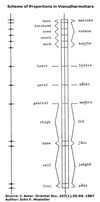 Whatever the basis for the system, it is probable that Polykleitos’s text and others like it guided the Greek sculptors in their work. What about the Indian artisans? The technical specs were spelled out in a variety of texts including Brihatsamhita, Visnudharmottara, Pratimalaksanam, Chitralakshana, Agnipurana and Matsyapurana. In practice, a traditional artisan learnt (and still learns to this day) his craft from his father, using a simplified version of these specs. John F. Mosteller who has done some excellent and much needed quantitative work in Indian iconography [1], showed that the basic technique is to draw a vertical rule, subdivide it into nine modules, which are then filled in. Thus the system uses a modular rule — a ruler whose marks are not necessarily equidistant. Different texts recommend slightly different modular scales but by and large the proportions match the Greek system, especially in the Gupta period (the Brihatsamhita was written a little later later, and it’s clear that Varahamihira knew and was influenced by Greek sources). Mosteller gives a nice example of the use of the scale in the Sarnath Buddha (late 5th century C.E.) [ibid].
Whatever the basis for the system, it is probable that Polykleitos’s text and others like it guided the Greek sculptors in their work. What about the Indian artisans? The technical specs were spelled out in a variety of texts including Brihatsamhita, Visnudharmottara, Pratimalaksanam, Chitralakshana, Agnipurana and Matsyapurana. In practice, a traditional artisan learnt (and still learns to this day) his craft from his father, using a simplified version of these specs. John F. Mosteller who has done some excellent and much needed quantitative work in Indian iconography [1], showed that the basic technique is to draw a vertical rule, subdivide it into nine modules, which are then filled in. Thus the system uses a modular rule — a ruler whose marks are not necessarily equidistant. Different texts recommend slightly different modular scales but by and large the proportions match the Greek system, especially in the Gupta period (the Brihatsamhita was written a little later later, and it’s clear that Varahamihira knew and was influenced by Greek sources). Mosteller gives a nice example of the use of the scale in the Sarnath Buddha (late 5th century C.E.) [ibid].
I haven’t looked at the modular scales too closely, but it seems to me that the proportions bracket the golden ratio. For example, in the Visnudharmottara scale, the proportion A: B where A is the distance [navel,crown] and B is the distance [navel,base-of-relaxed-foot] is = 3.5:5.5 = 1:1.571. In the Brihatsamhita scale — the one recommended by Varahamihira — this ratio is 10/3:17/3 = 1:1.7. Recall that the Doryphoros, according to Grimm, uses 1:1.618… These numbers are derived from one of Mosteller’s figures [ibid].
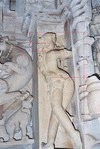 In that regard, the dancing damsel’s proportions are pretty revealing. The Adinatha temple that she graces was probably built during the reign of King Dhangadeva (950-1008 C.E.). There are some similarities between Grimm’s proportions for the Doryphoros and that of the damsel. Whether this similarity is accidental, illusory, or real remains to be seen. I’m inclined to vote for “accidental,” a consequence of the fact that the modular scales used by Indian artisans are close (within 5%) to the one recommended by Polykleitos, or rather, Grimm. Still, history works in strange ways. Who’s to say that the damsel’s sculptors were not influenced by the writings of a Greek sculptor some 700 years earlier.
In that regard, the dancing damsel’s proportions are pretty revealing. The Adinatha temple that she graces was probably built during the reign of King Dhangadeva (950-1008 C.E.). There are some similarities between Grimm’s proportions for the Doryphoros and that of the damsel. Whether this similarity is accidental, illusory, or real remains to be seen. I’m inclined to vote for “accidental,” a consequence of the fact that the modular scales used by Indian artisans are close (within 5%) to the one recommended by Polykleitos, or rather, Grimm. Still, history works in strange ways. Who’s to say that the damsel’s sculptors were not influenced by the writings of a Greek sculptor some 700 years earlier.
Indeed, the so-called Fibonacci sequence was known to the Indians at least as early as 7th century C.E. and possibly even as early as 200 B.C.E. Virahanka mentions the terms in this sequence and it’d been studied by Gopala (c. 1135) and Hemachandra Suri (1089-1172 C.E.). Fibonacci’s Liber Abaci (1202 C.E.) introduced Indo-Arabic notation and the rudiments of algebra to Western Europe (the last Khajuraho temples had been built by then). The misattribution can be traced to the French mathematician Edouard Lucas. The math historian Parmanand Singh deserves credit for pointing out the error [2].
Francis Bacon write in his essay On Beauty that “there is no excellent beauty that hath not some strangeness in proportion.” In our age we’re once again slowly discovering that the converse is true as well: there is no proportion that is not in some way strangely beautiful. The unsettling ability to see beauty in the conventional as well as in the blasphemous is perhaps the true legacy of the people who carved into life that woman in stone.
[1] Mosteller, John F. A New Approach for the Study of Indian Art. J. of the American Oriental Society. 107(1), pp. 55-69. 1987. [2] Singh, Parmanand. The so-called Fibonacci numbers in ancient and medieval India. Historia Mathematica 12, pp. 229-244. 1985. [3] Vatsyayan, K. The Theory and Technique of Classical Indian Dancing. Artibus Asiae. 29(2-3), pp. 229-238. 1967.
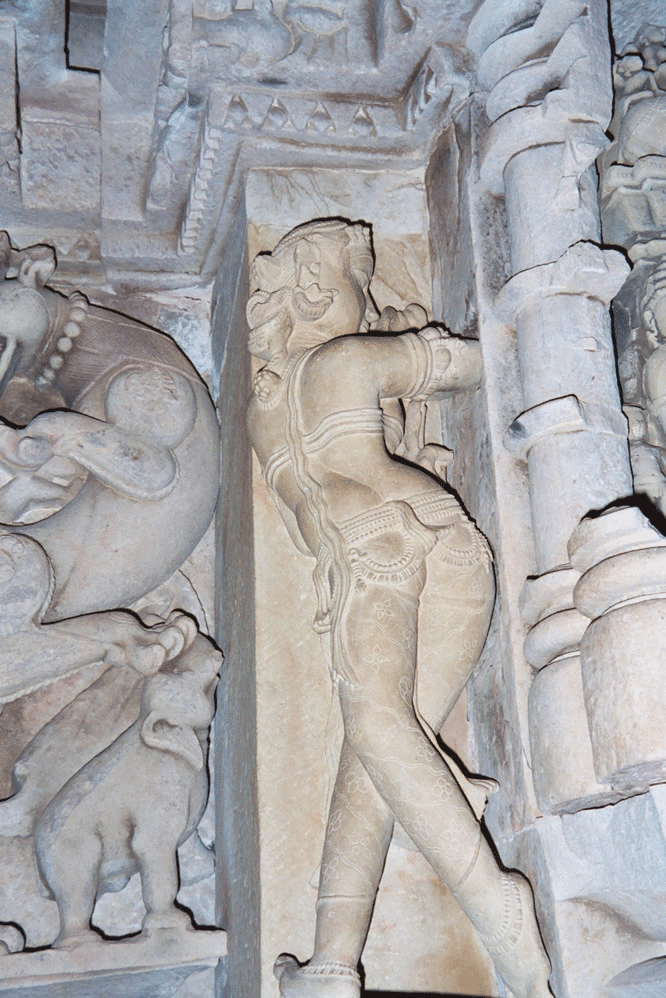

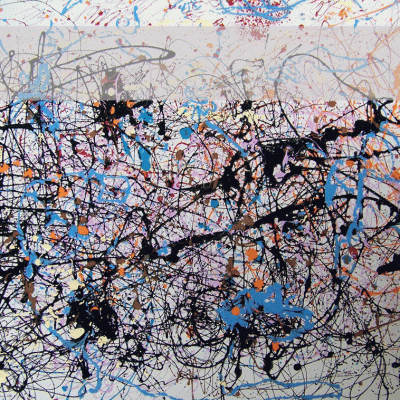
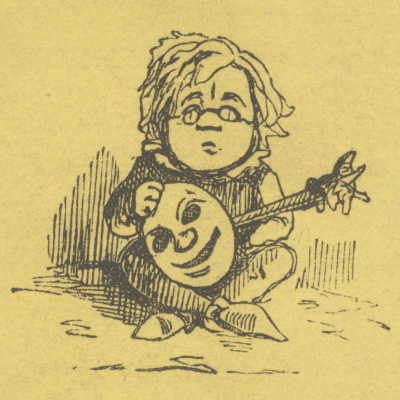
Good evening,
Could it be possible to receive one copy of the article “The Theory and Technique of Classical Indian Dancing” ?
Thank you very much.
Sincerely.
Sophie Couëtoux
You sir are worthy of being called a “GOD”.
[…] found the blog because I had been searching for more information on the Tribhanga pose, which it provided in great detail. If you didn’t read that post when I first linked to it in 2007, read it now. It’s […]
The first two examples above resemble the Abhanga more than the Tribhanga. Am I missing something?
Do you mean the Chola Bronze of Parvati and the Khajuraho sculpture are in abhanga rather than tribhanga? I had my doubts about the Parvati, then decided it showed the characteristic ‘S’-shaped pattern. The tribhanga shares with the abhanga the fact that weight is primarily supported on one leg. In the gif with the six poses, the Odissi dance depiction of ‘tribhanga’ shows the dancer with both legs bent. Confusingly, that’s not how tribhanga is interpreted in the blog article: one leg is straight and bears the weight, the other leg is bent, the hip slopes, and the neck is held at a balancing tilt. I should probably get rid of the gif with the Odissi dance poses.
Thank you, I used your article as a source in my research paper, which talks about Indian sculpture and Indian dance. And uses them to prove the theory of “art mimics life”.
The gif is a bit confusing, though necessary in illustrating the different iconic poses of Indian dance. So as not to confuse the reader by implying the Tribhanga, the subject of the article, is the only iconic pose.
You sir are quite the genius.
You’re quite right; I am a genius. 🙂 Thanks, Erika. Glad u found the piece useful.